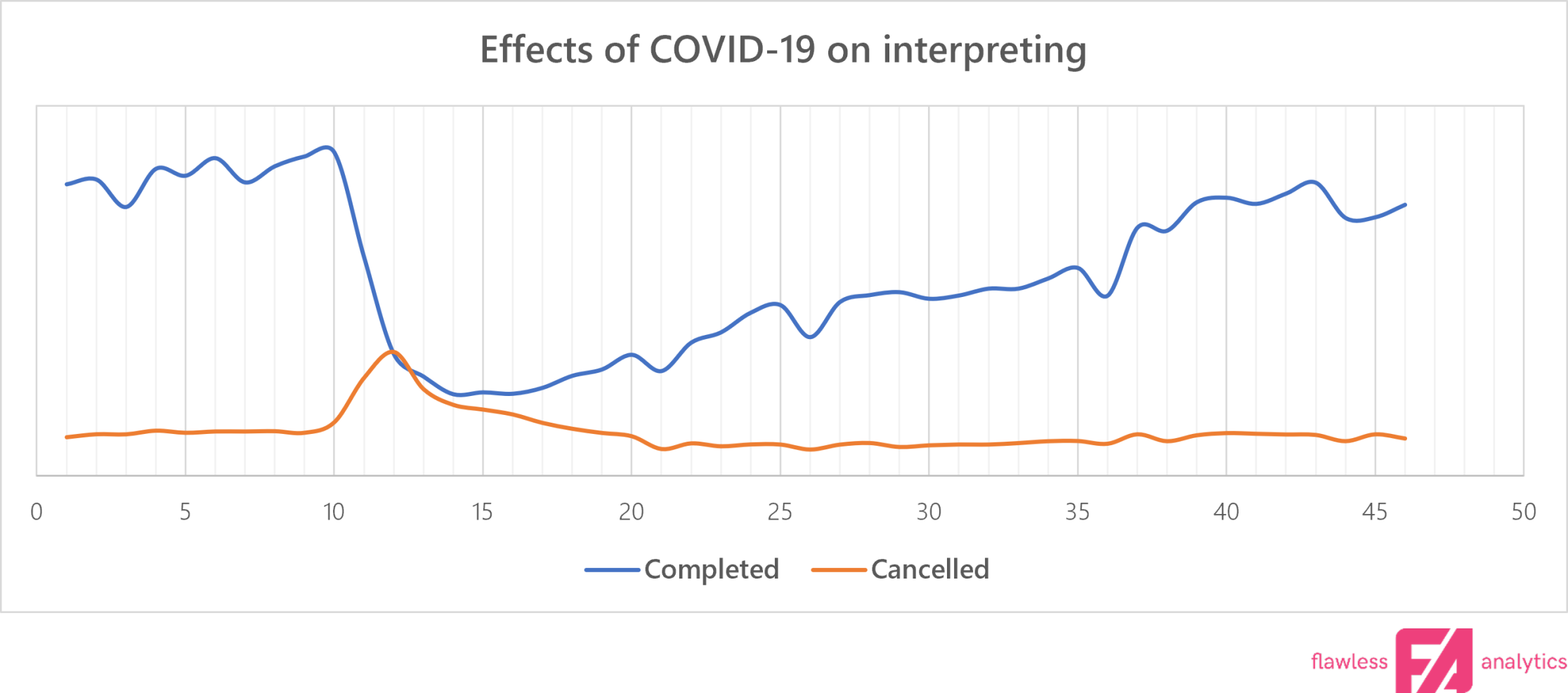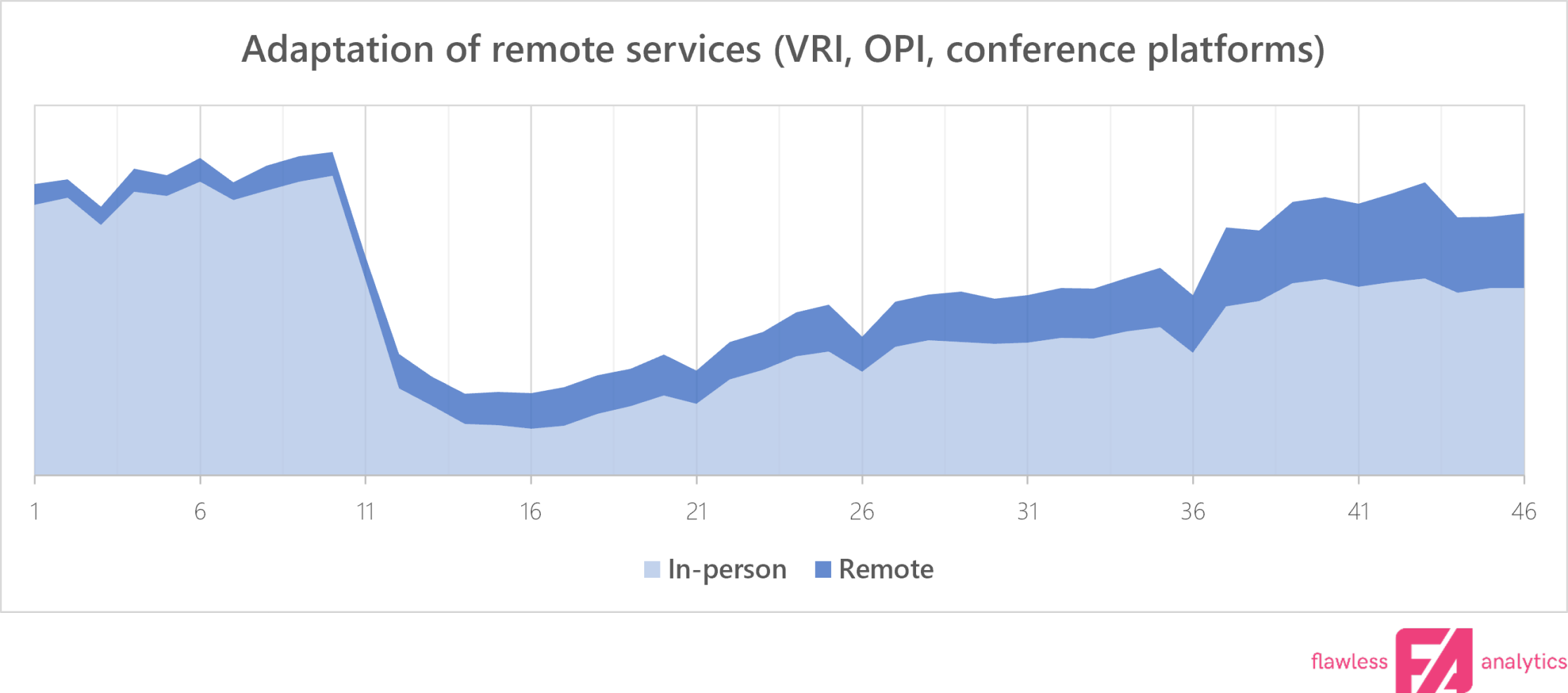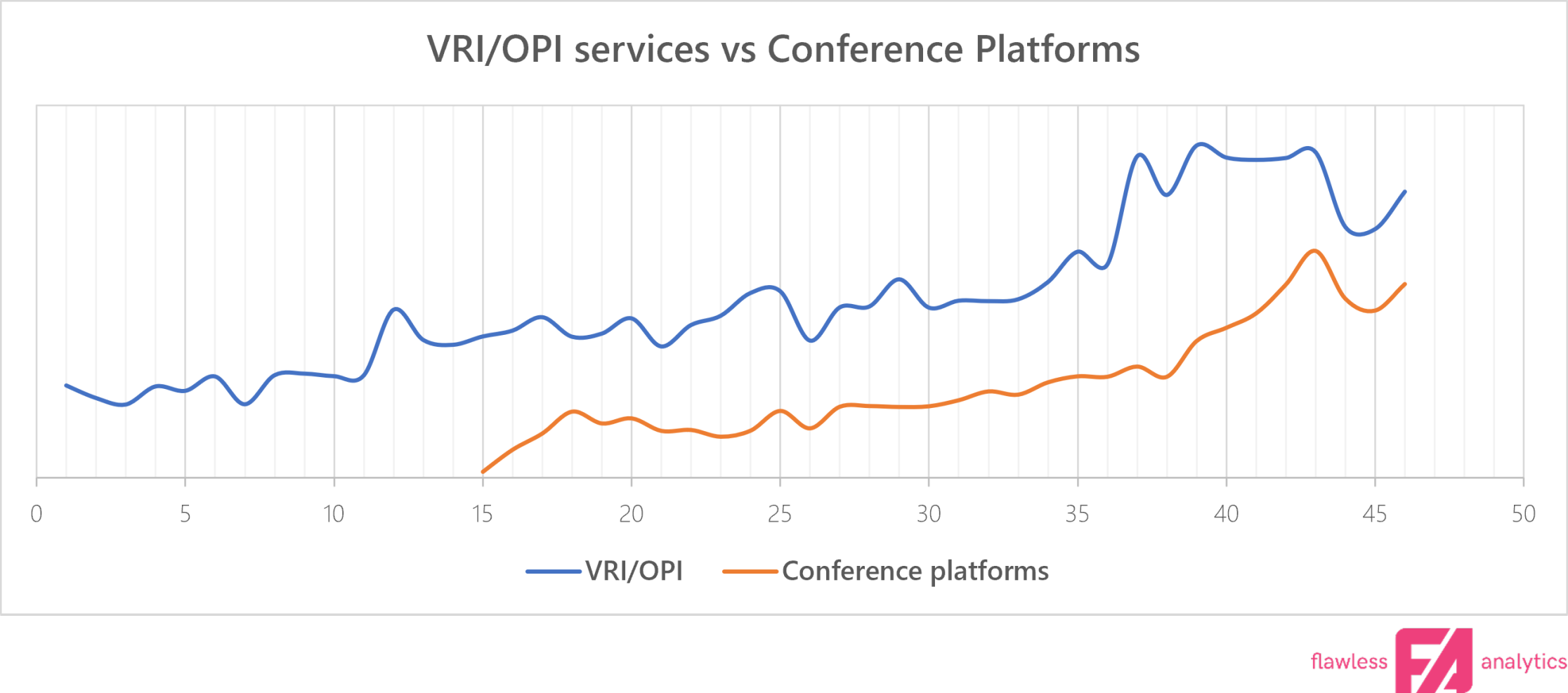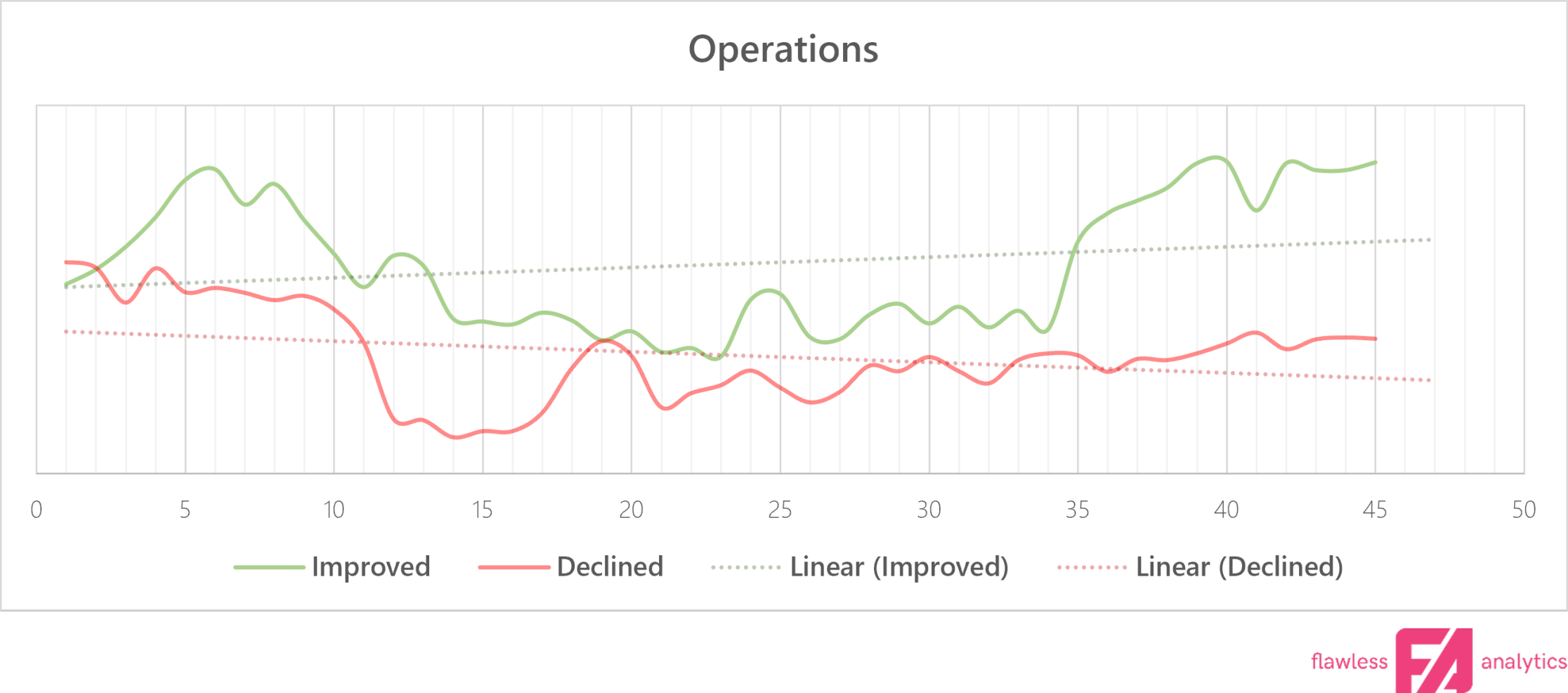"No BS" view how coronavirus (COVID-19) affected the language industry - The Aftermath
November 20, 2020 - Reading time: 5 minutes
As second wave of COVID-19 is upon us and several viable vaccines are about to be introduced to the market, let's take a look at what happened and where do we go from here.
The chart below is a relative (moving average) number of interpreting assignments completed and cancelled in the 46-week period of 2020.

The year started with nearly 10% increase in only 10 weeks and was, statistically, on record to be the best year. In two weeks, COVID-19 reduced the volume of completed assignments by 75% and nearly tripled cancelled events. As US economy came to a standstill, on-site and remote interpreting services were affected almost identically.
THE RISE OF REMOTE SERVICES
Majority of the language service providers were forced to adapt. Some reported 90% of business reduction and were in search of new ways to work with their clients. Within few weeks the brands like Zoom and MS Teams became known to everyone. While OPI and VRI services were on the market for number of years, many end clients completely ignored those options and started to require their providers to deliver interpreting, using the platform of their choice.
For instance, ScheduleInterpreter® today supports management for 29 various platforms and ScheduleInterpreter® VDO, delivering click-to-join option for interpreters and consumers.

The utilization of remote services went up from being just 7.7% at the start of 2020 to 40% by the middle of November.
DER TEUFEL STECKTIM DETAIL
Nietzsche, who is often attributed to the origin of "the devil is in the details" phrase, was absolutely correct. Remote interpretation during and, most likely, after COVID-19 is no longer a simple replacement of on-site services with OPI and VRI. ScheduleInterpreter® offers import of data from third party providers and then re-billing the clients, using built-in complex financial structures, otherwise absent in third party providers. This functionality helped us to analyze data and understand how various remote services were utilized.

Since early April 2020 (30-week period), when conference platforms management tools were introduced in ScheduleInterpreter®, this form of service delivery made sizable gains and comes very close at 67% of VRI and OPI volumes combined. This is the tectonic change of the industry we talked about in previous articles.
Disclaimer: ScheduleInterpreter® JustOPI and VDO technologies are used to provide OPI and VRI services. Due to COVID-19, both have wider utilization in 2020 and are part of the VRI/OPI graph.
OPERATIONS
Is there a way to prepare your operations to withstand pandemic or any other form of disruption? The chart below compares operational numbers of two language service providers. Two graphs are overlapped, based on number of completed assignments. For simplicity, they are called Improved (green) and Declined (red). We also show a dotted line, representing linear trend in the 46-week period.

Comparing week 1 and week 45 Improved graph shows nearly 60% increase in volume. This number is good for any year, it is remarkable for 2020. Same two points of comparison for Declined graph show 30% reduction in volume. These are two extremes and do not represent the industry average. It is also seen that Improved graph at the beginning of 2020 shows rapid growth.
Is there a blueprint to improve operational numbers, especially in a year such as 2020?
The answer is most likely complex and long, and will depend on your business model. The following are several bullet points from the "playbook" of the best performing enterprises.
- Select the right technology provider for your enterprise. Ability to rapidly deploy solutions to address your customers' needs will help to minimize the impact on your business;
- Consider to reduce or eliminate white-label outsourcing. Technology today allows to build infrastructure to deliver remote services using staff and contract vendors with minimal investment. This helps to build long-lasting relationships with your vendors and dramatically improves margins;
- Keep an open mind;
- Expand into new territories. Remote services today allow businesses of all sizes connect with new customers in the markets that previously were unreachable;
- Seek integration and cooperation. Add more options and solve complexities through working with other service and technology providers.
Charts used in this article are © Copyright 2020 Flawless Analytics.
Flawless Analytics offers deep data analysis, business intelligence and process improvements, scaling, forecasting and advanced visualization tools. We help with discovery, interpretation, and communication of meaningful patterns in data and their application towards effective decision making.
ScheduleInterpreter® is a cloud-based interpreters and interpreting services management platform.